Much like impulse-buying a piano, rushing into filling an open position just to get it filled is never a good idea. Except, the result of not conducting proper candidate testing and a sound verification process can have negative consequences for the candidate, the company, and other employees.
Without a thorough vetting process, you could be hiring someone that’s lied about their qualifications. Or worse still, someone who is not who they say they are!
TL;DR – Key Takeaways
- Candidate testing and verification, also known as a vetting process, is a way to double-check that a candidate is not lying about their experience or qualifications or is outright fraud.
- Without proper vetting, the company could potentially land in a lot of trouble. For example, recruiting candidates who cannot do their job, having to re-hire for positions, or even worse — employing a candidate that steals private corporate or government data on the job.
- The difference between the candidate vetting process and assessment tests is that vetting should come after assessments. That way, your team will know who’s got the goods before spending valuable time with in-depth interviews.
- Companies that do vet candidates thoroughly can benefit from reduced hiring costs and the confidence that your workforce is trustworthy!
- Hiring managers should take various steps to ensure a proper vetting process, including writing clear job descriptions, selecting appropriate assessments, designing an interview process, and conducting background checks.
- Testing potential candidates’ skills can help your team quickly sift out the talent you need. And Toggl Hire’s the tool for the job! 😉 Screening, assessing, and hiring all in one place!
What is candidate verification or vetting?
Candidate verification is about double-checking or vetting an applicant’s personal and employment details that they’ve shared on their application. The purpose of employee vetting is to eliminate unsuitable or unqualified candidates from your talent acquisition stream. The process includes verifying information such as:
- Identity
- Qualifications
- Employment history
- References
- Criminal history (if any)
A background check is a more formal part of the vetting that looks into a candidate’s official records, such as verifying their identity via their social security or identity number, their financial or credit status, and whether they have a criminal record.
In the end, the vetting process is less about an applicant’s capabilities and more about confirming that they are who they say they are.
Why is vetting important in the hiring process?
Vetting candidates is an essential part of the overall hiring process. Why? Because you need to know you’re hiring trustworthy candidates that will not compromise your business in any way.
If candidates have lied about their qualifications, for example, or worse — have malicious intent — you need to know BEFORE they are hired.

However, the level of risk involved for organizations will differ. If we’re looking at high-risk situations, such as federal or other government institutions, like national intelligence agencies, that deal with extremely sensitive data at scale, candidate verification should be a non-negotiable.
Companies that handle, manage, or store high volumes of data for other organizations, such as cloud warehouse storage, are also put at extremely high risk by fraudulent candidates.
Say, for instance, a new hire is not vetted properly and uses their position to steal valuable corporate or government data. This could cause massive financial and reputational losses for the company — which could have been avoided with a comprehensive vetting process.
There are further negative consequences if we consider positions that affect many others, such as doctors or surgeons. Or even where the overall risk is lower, but the person has a deep and broad influence on a company’s success, such as a Chief Marketing Officer or Product Manager role.
Your organization can avoid costly hiring mistakes by incorporating skills testing in your selection process. Toggl Hire offers a wide range of customizable skills test templates that can help your team spot and discard the fakes fast!

How is vetting different from candidate testing?
Vetting is not quite the same thing as testing a candidate, but both should be a part of the hiring process. Candidate testing, also referred to as talent assessments, is usually done at the start of the application process to establish if an applicant has the necessary skills for the role and is a great way to eliminate unqualified candidates.
Vetting, on the other hand, occurs once the hiring manager has narrowed down the applicant pool through skills testing, video or pre-recorded video interviews, or other pre-employment screening steps.
Candidate testing is typically not just a single test. It’s usually a combination of tests specific to the organization and role. What’s great is that they help hiring managers gather contextual information on potential candidates to support their hiring decisions.
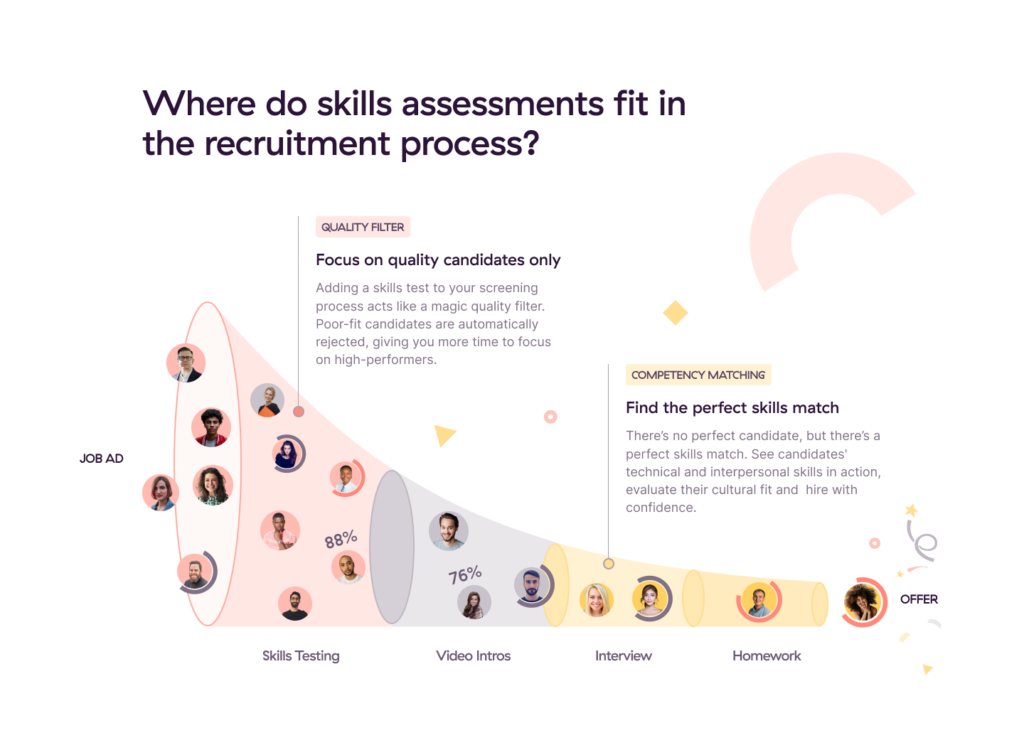
📚 Learn more about how to vet candidates with pre-employment tests
Examples of candidate assessments
Applicants may claim to have what it takes for the role. But as hiring managers know, they may not actually have all the soft and hard skills needed to succeed.
There are a few tests your team can use to select the right candidate.
- Skills tests — technical questions to test whether they have the technical expertise and knowledge for the role.
- Cognitive ability tests — to determine their ability to think, reason, learn and apply info, such as critical thinking or logical reasoning.
- Personality tests — to verify that candidates possess the necessary behavioral traits for the role. The Big Five model and Caliper Profile are two popular examples.
- Emotional intelligence tests — reveal how well they manage their emotions and understand others’ emotions in the work environment.
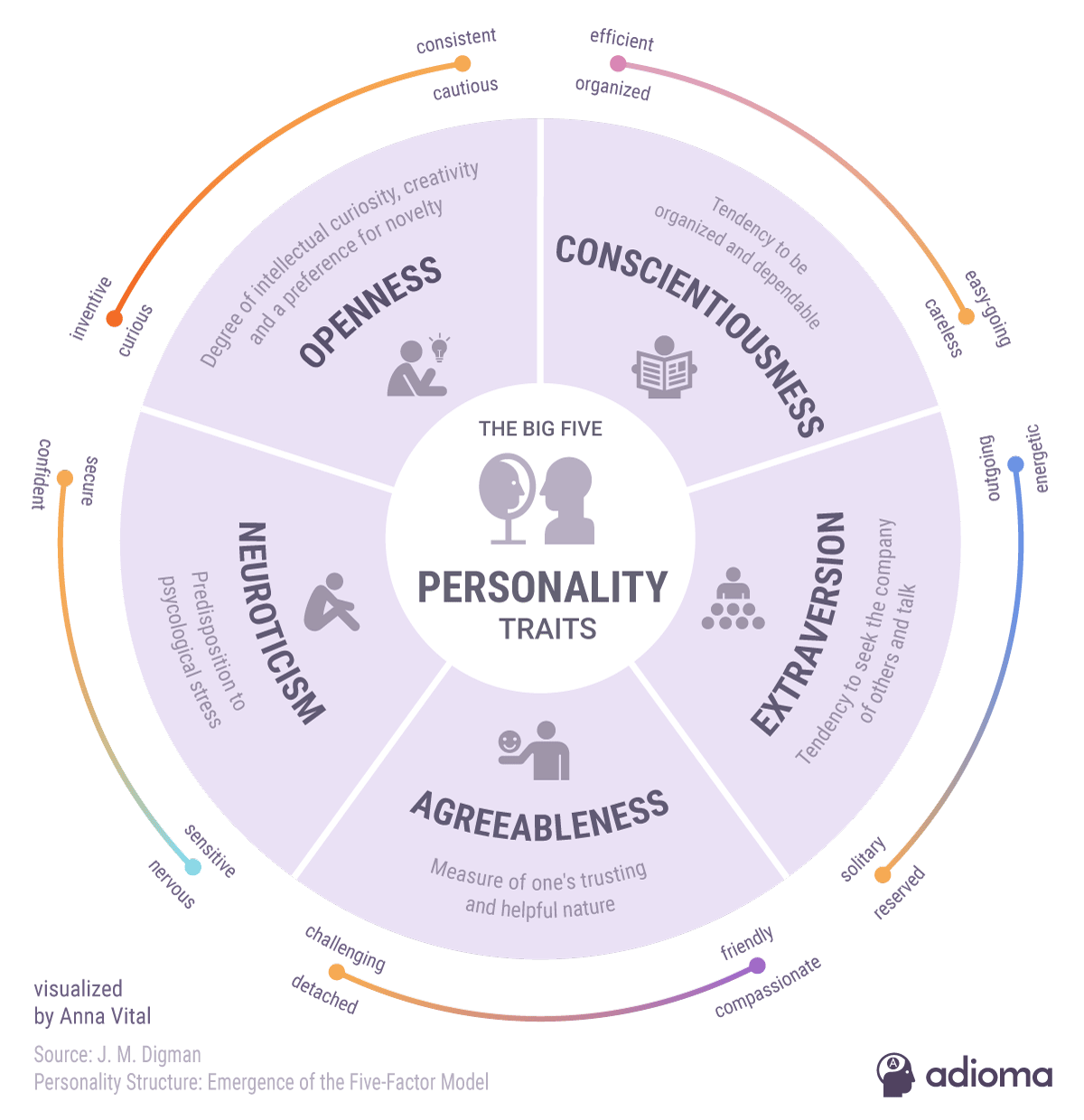
Advantages of proper candidate vetting
With an effective candidate assessment and vetting process, you’ll be able to perform due diligence on applicants and ensure a good hire.
But there’s more where that came from.
Improve hiring efficiency
Save time in the hiring process, such as streamlining what could otherwise be a lengthy interview process or the time and cost it takes to replace someone that’s not a good fit.
Uncover false credentials
A vigorous testing and vetting process can root out any applicants that share a false work history or other false credentials and flush out fraudulent candidates with a thorough background check.
Avoid the cost of bad hires
Don’t let the team rush into hiring someone just to fill a role that’s been open for a long time. A bad hire costs far more than the effort to vet applicants properly. Usually up to 30% of that person’s annual salary!
📚 Learn more about how to prevent a bad hire
7 steps on how to vet new hires
Vetting candidates properly may be vital in the screening phase, but how do you go about it?
Let’s go through the vetting process step by step to ensure consistency in hiring people that will make your organization proud.
You’ll be using tools from a clear job description to phone or video interviews, checking professional references, and other fact-checking. But the collection you use could differ depending on the role.
#1 — It all starts with the job description
The vetting process starts with a clear job description. That’s the foundation for attracting quality, qualified candidates.
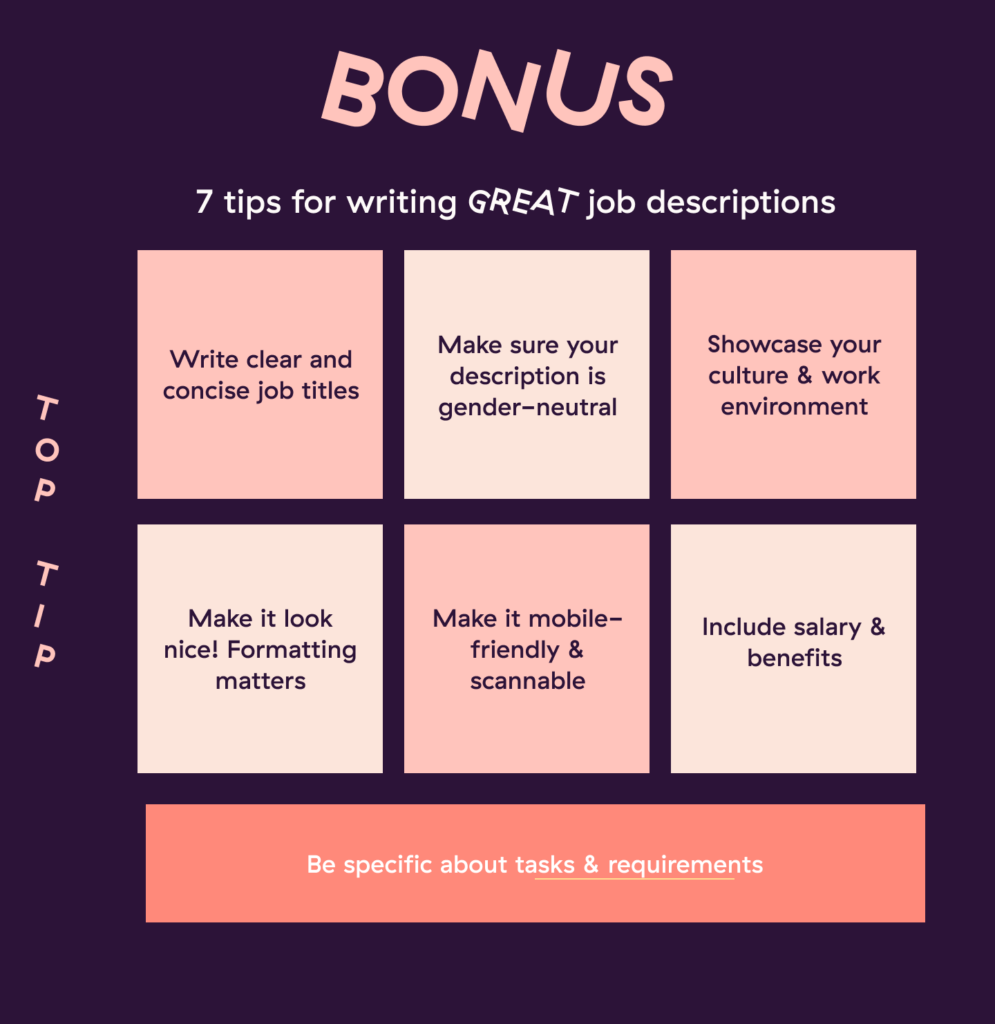
#2 — Pre-screening video interviews
These days, you’re highly likely to interact with applicants via many different digital means, such as video interviews. They’ll give you a clearer picture of whether the candidate is a good fit in the long run.
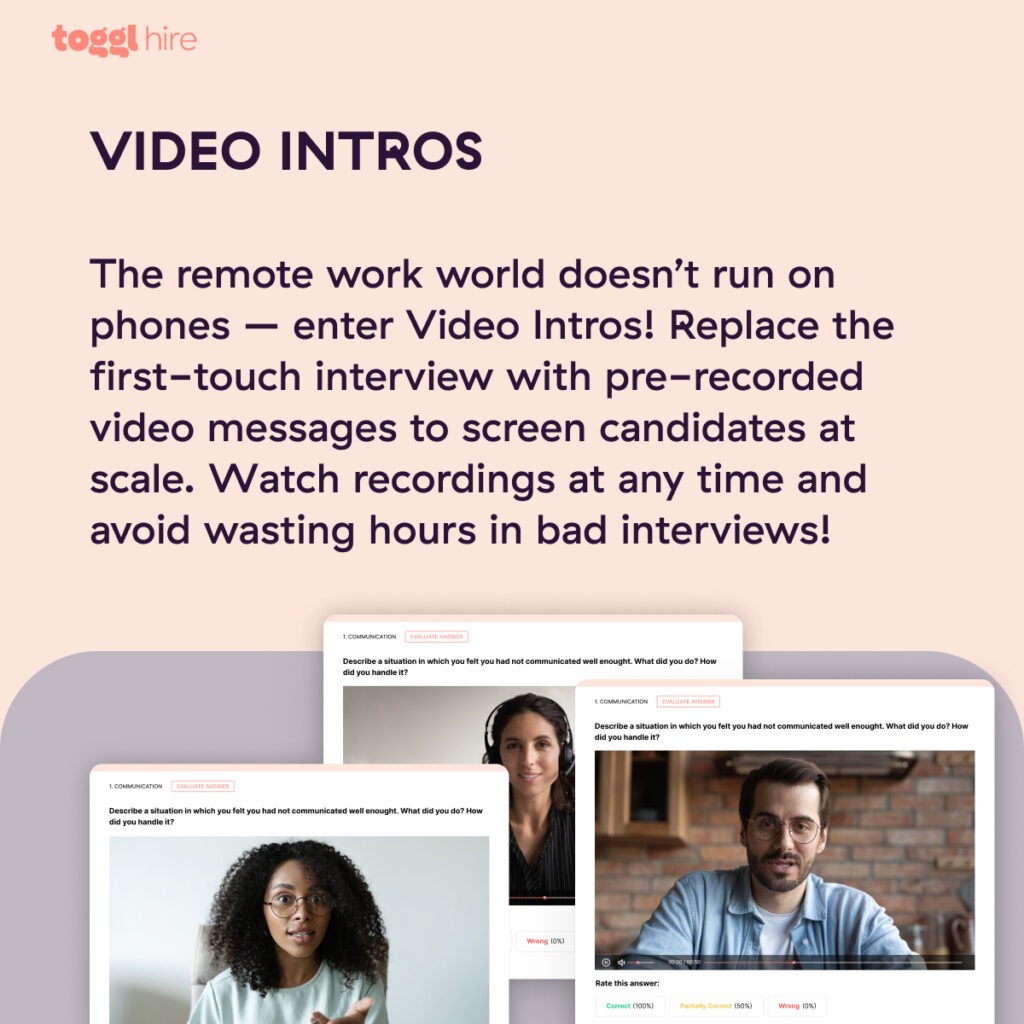
📚 Here are 10 tips to help you perfect virtual interviews
#3 — Skills assessments or homework assignments
A skills test will help you gauge whether a candidate actually has the skills to do the job well rather than just bragging about their experience or qualifications on their CV or cover letter.
Homework assignments are a take-home type of assessment the candidate completes in their own time and test a specific skill they’ll need on the job. For instance, getting a potential new copywriter to write a blog to test their writing skills in your company’s area of expertise.
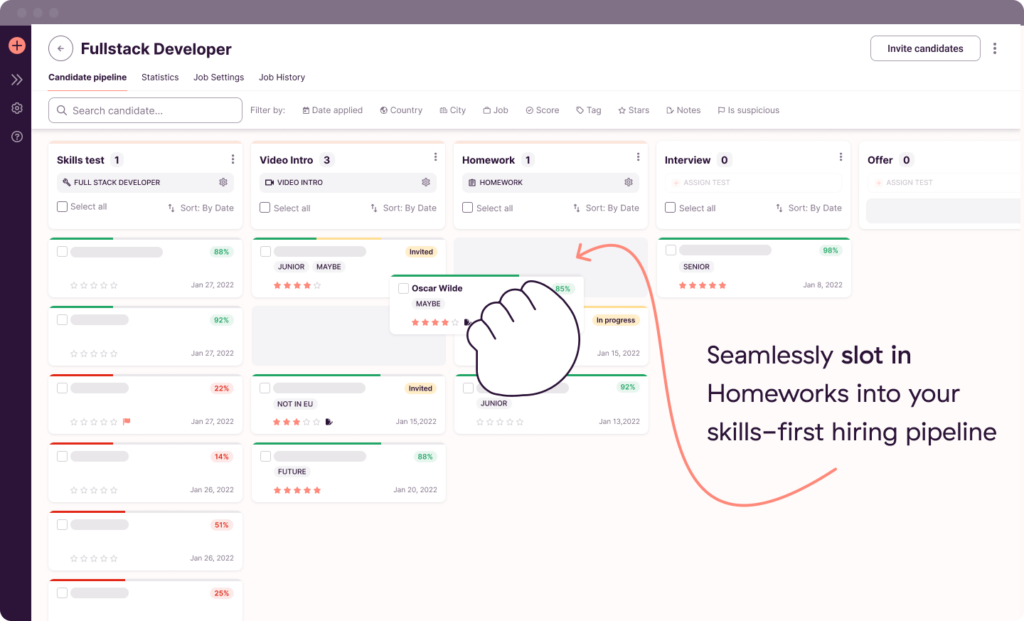
#4 — Conducting in-person interviews
Once you’ve significantly trimmed down the number of applicants through skills assessments, you can then set up in-person interviews (if viable) with only qualified candidates — and not waste your team’s time with any duds.
#5 — Checking references
During the application process, candidates will share their professional references, like their job history and names of past employers. These need to be vetted to ensure the potential employee has the work experience that they claim to have.
#6 — Peeking at their social media activity
Yes, you can check out what the applicant posts on their social media profiles. But make sure it’s something that’s really necessary, such as for a social media manager role, and that it’s not illegal or discriminatory in any way.
Unsure? Read more about the dos and don’ts of social media screening here.
#7 — Running thorough background checks
You need to know exactly what kind of person you’re considering getting on board. For some roles, verifying the candidate’s criminal background or credit history is essential to ensure they’re not in any serious debt, for instance—an crucial step in jobs such as anything security or government-related.
So, can proper candidate testing and vetting really prevent bad hires?
A resounding yes. And there are horror stories a-plenty of companies who either skipped this step or were fooled by false credentials. Don’t be them!
The cost of bad hire is steep and extends far beyond the cost of $4,425 to hire a new employee! So make sure you know exactly who you’re hiring by thoroughly and properly vetting employees.
Incorporate skills assessments into your vetting process, and follow the 7 steps we’ve shared to keep growing your company with talented, friendly faces.
Juste loves investigating through writing. A copywriter by trade, she spent the last ten years in startups, telling stories and building marketing teams. She works at Toggl Hire and writes about how businesses can recruit really great people.




